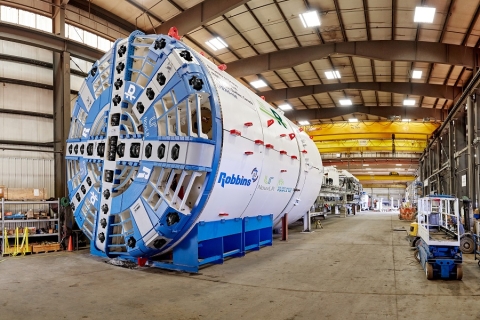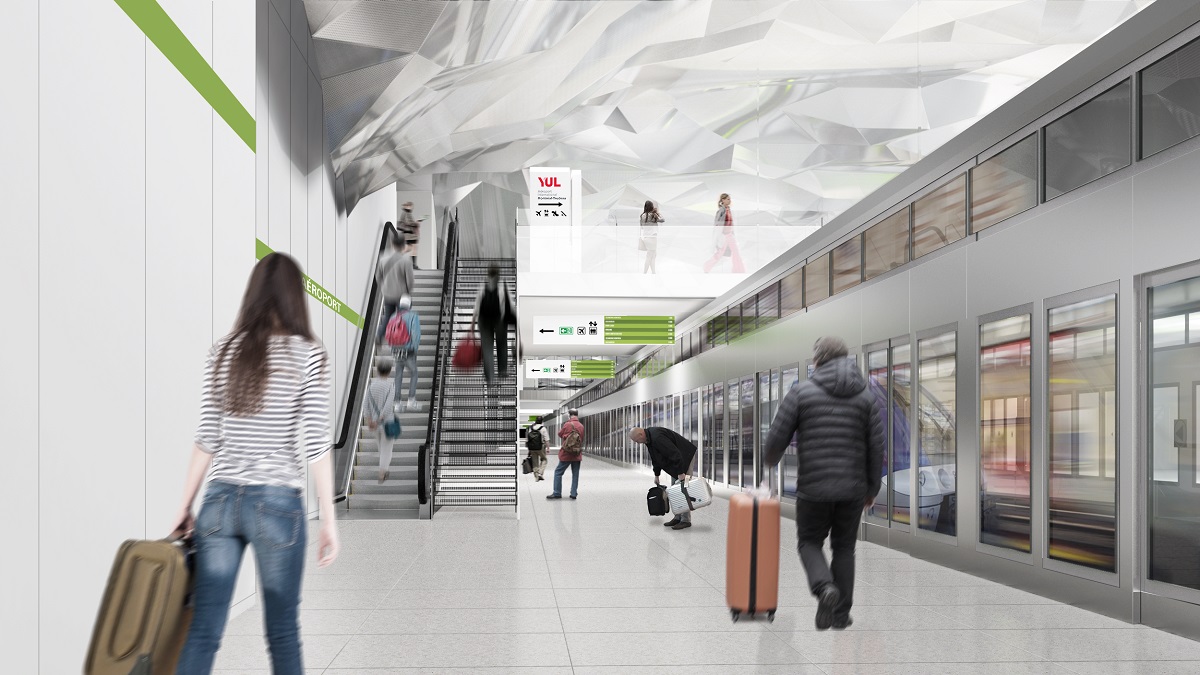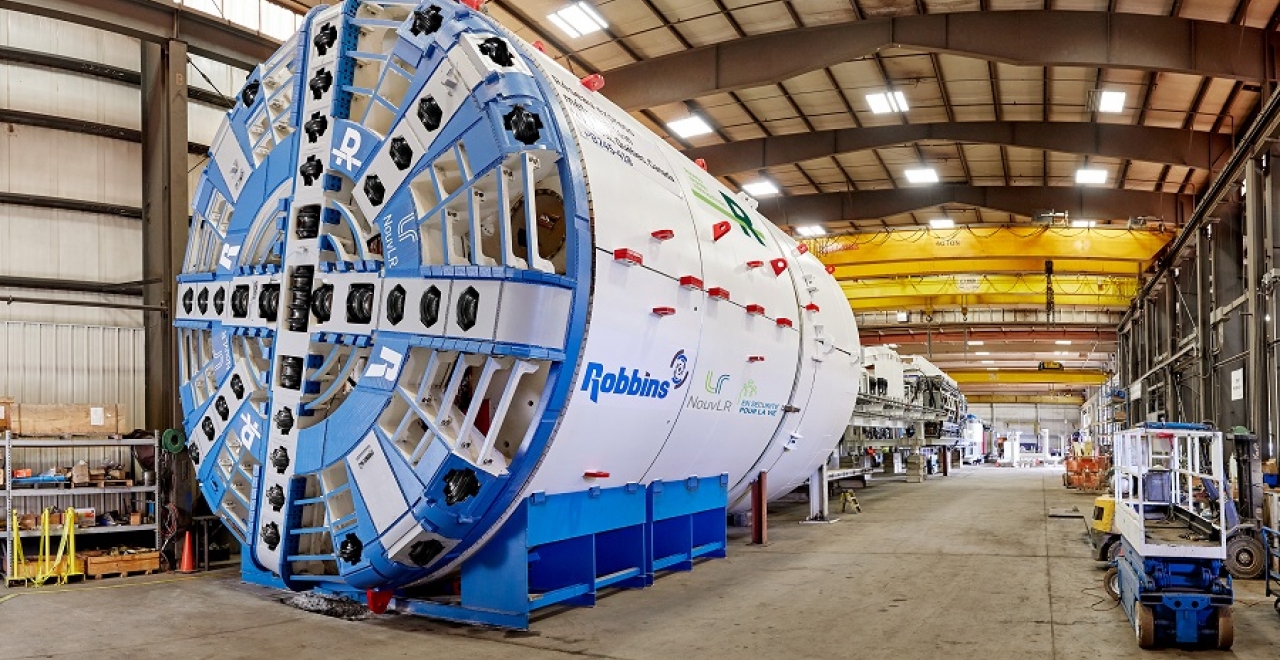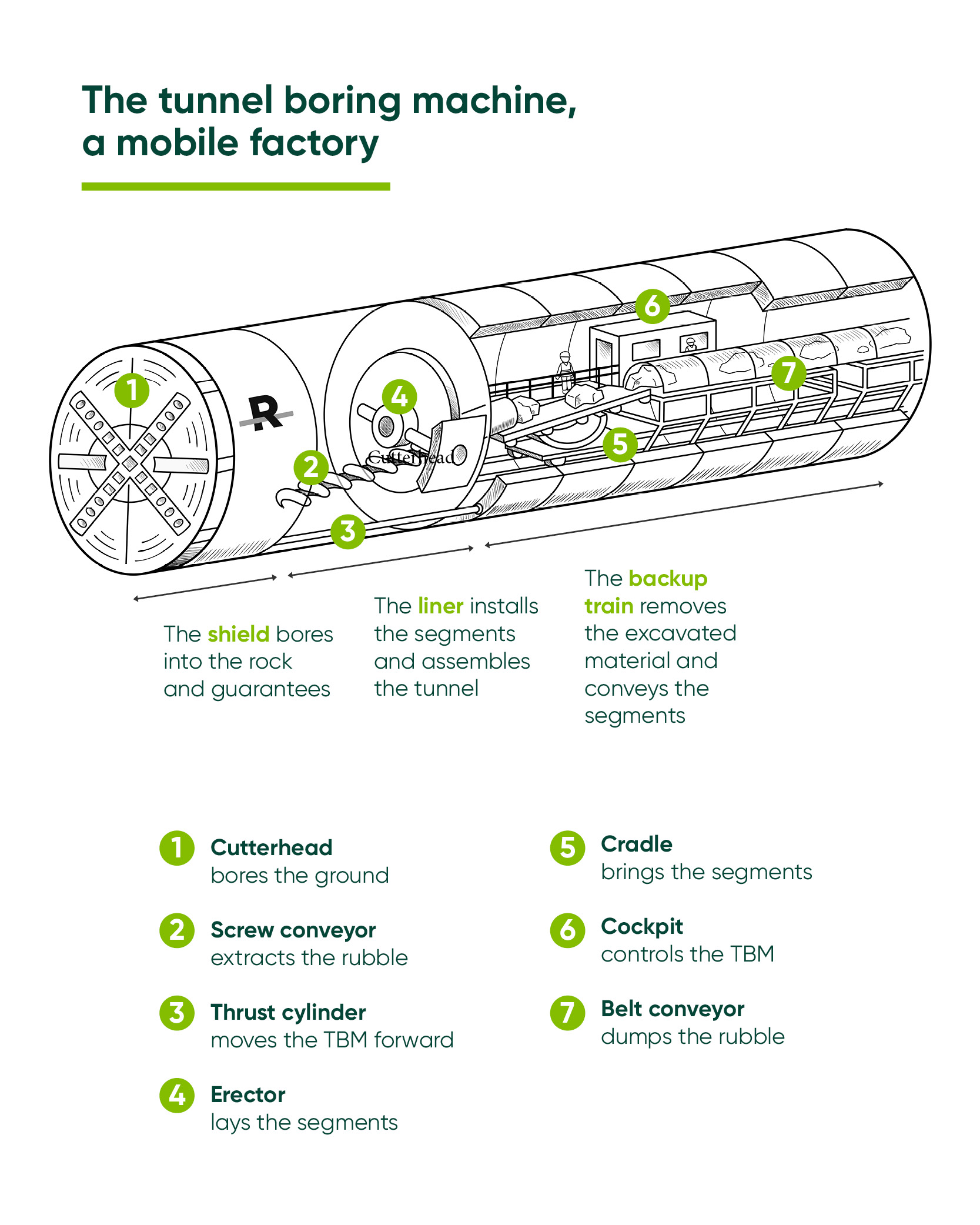
Station at Montréal-Trudeau airport: The tunnel boring machine has arrived
Parts of the tunnel boring machine (TBM) has arrived in Montréal. We explain how it works; help us find a name for this impressive machine.
This is a ground-breaking situation in Montréal and Québec. Until now, the construction of the metro had systematically been carried out by drilling and blasting. This is the first time that a TBM of this type has been used–capable of both digging through rock and assembling the tunnel.
The TBM will dig a 3 km tunnel between the Technoparc and Montréal-Trudeau airport. The REM’s route will be underground in this area to protect the wetlands of the Technoparc and pass under the airport runways, more than 30 metres below the surface.
Given the huge size of the machine, it had to be delivered in pieces, requiring about 60 trucks. The next step is to assemble and test this specialized equipment, then drilling will begin in the coming months.
How does a TBM work?
It's like a mobile factory, which moves forward as the work progresses. This gigantic circular machine is over 155 metres long and includes several specialized items, a belt conveyor, cockpit and about 10 workers inside (operators, mechanics, electricians and handlers).
Here is a simplified explanation of the TBM’s 3 main operations:
- Dig: The 7.38-metre diameter cutterhead bores into the ground. It is composed of 47 discs (that each apply 25 tons of pressure) breaking up the ground. It is specifically designed and adapted to the type of soil through which the REM passes.
- Evacuate: The excavated material is evacuated by a worm screw and transferred to a belt conveyor, then loaded into trucks at the end of the TBM for disposal.
- Build: The erector installs seven prefabricated segments to form a completely waterproof ring. Each ring is made of 7 segments. In all, it is necessary to install 1,800 rings to complete the tunnel, or 12,600 segments.
This technological marvel has the advantage of being very speedy and safe for workers. It devours the rock and makes it possible to move forward much faster than any other type of machine for digging a tunnel.
Suggest a name for the TBM
It is a tradition in the construction industry to give these impressive machines a name. We did this a few months ago for the two launching beams “Anne and “Marie”; now it’s your turn to come up with a name for the TBM.
Tradition dictates that proposals must be a female first name. The TBMs are placed under the protection of Saint Barbara, patron saint and protector of miners and underground workers.
We will form an internal committee with the TBM managers of the REM project office and NouvLR. The person who suggests the winning name will participate in a site tour and the inauguration of the TBM in December.
***The form is now closed. The name of the TBM will be announced in December.***
Technical information
- Supplier: The Robbins Company (Ohio, United States)
- Length of the TBM: 100 metres
- Tunnel length: 3 km
- Depth of the starting shaft at the Technoparc: 12 metres (40 feet)
- Depth at the airport: 35 metres (115 feet)
- Excavation diameter: 7.38 metres
- Speed: 1.70 metres per hour, or a ring
The REM at the Montréal-Trudeau airport
- Commissioning in 2024
- Frequency: 10 min. peak, 15 min. off-peak
- Theoretical capacity per departure: 600 people
- Universal access: all stations have elevators
- Édouard-Montpetit (blue line) to YUL: 21 min.
- McGill (green line) to YUL: 24 min.
- Central Station (orange line) to YUL: 25 min.
 Architectural rendering of the Airport station
Architectural rendering of the Airport station

